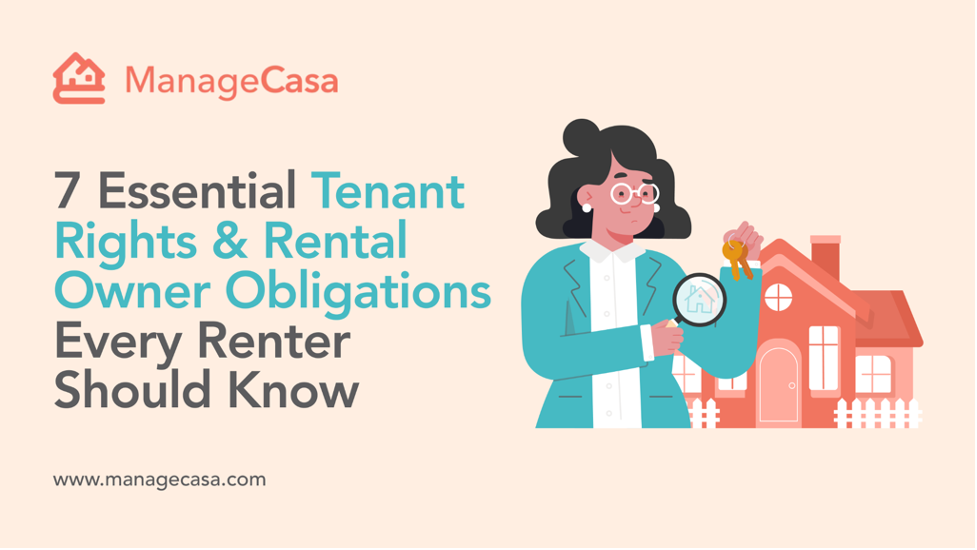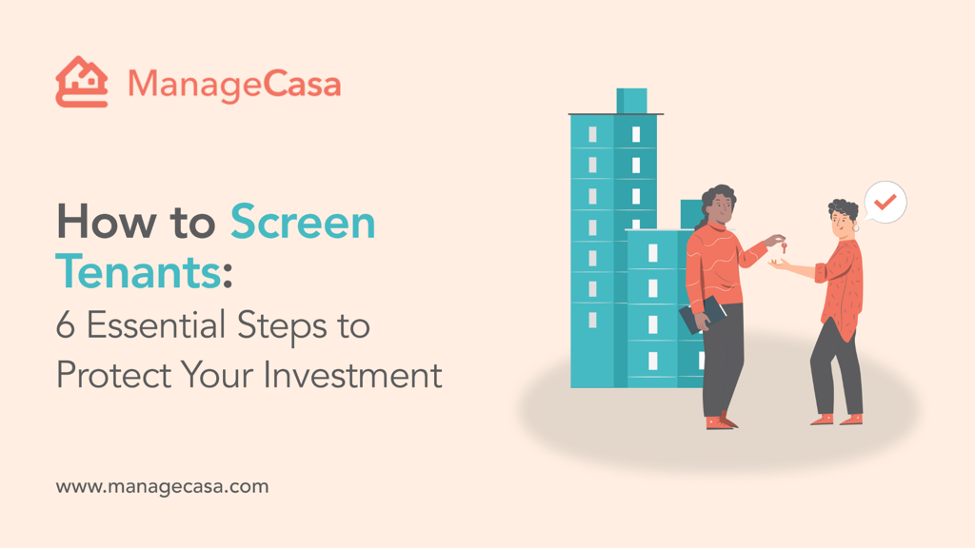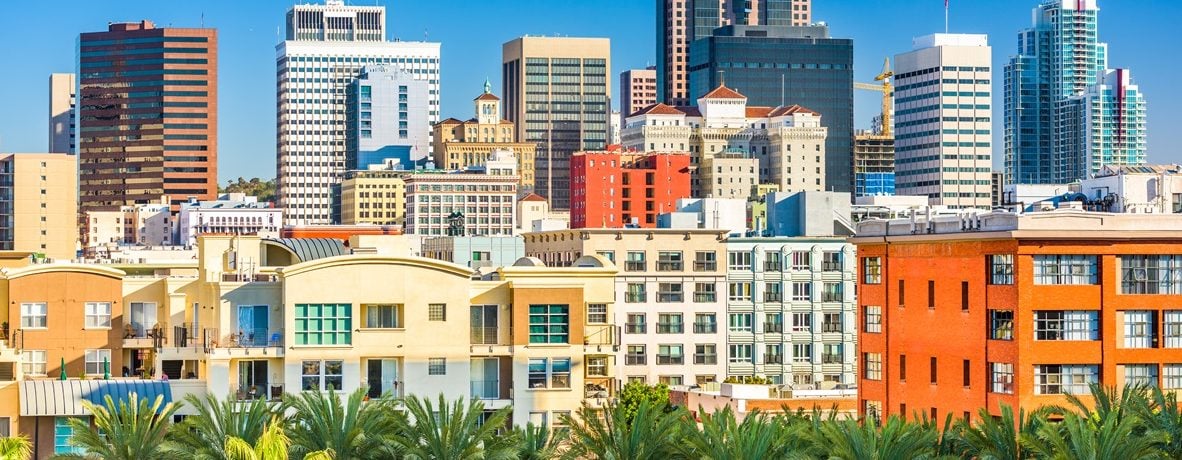Top 8 Property Maintenance Tips for Rental Owners: A Detailed Guide
Property maintenance is one of the most crucial responsibilities for rental owners.
A well-maintained property not only attracts quality tenants who are willing to pay a premium but also helps preserve the property’s value over time. Furthermore, proper upkeep ensures that your investment remains in top condition, reducing costly repairs and keeping tenants satisfied.
But maintenance isn’t just about fixing things when they break—it’s about being proactive. A well-planned maintenance strategy can mean the difference between a thriving, profitable rental and one plagued by frequent repairs, tenant complaints, and unexpected expenses.
Owning a rental property can be lucrative and rewarding, but it has its fair share of challenges. Maintenance plays a crucial role in ensuring long-term success. A well-maintained property translates to lower vacancy rates, higher rental income, and fewer unexpected issues, saving you time, money, and stress.
This blog will explore the best property maintenance tips every rental property owner should know. From routine checks to budgeting for future repairs, these strategies will help you protect your investment, extend the lifespan of your property’s components, and create a positive experience for your tenants.
1. Understanding the Importance of Regular Maintenance
i. Long-Term Profitability Over Quick Fixes
Proactive maintenance ensures that minor issues—like a slow leak—don’t escalate into costly, large-scale repairs. Industry professionals widely agree that preventive maintenance is far more cost-effective than reactive fixes, and research supports this. Implementing a routine property maintenance schedule and checklist can help identify small issues before they become major expenses.
Even years ago, the Springer & Waller study found that older properties and those with frequent tenant turnover face significantly higher maintenance costs. This remains true even today, making it essential for rental property owners, especially those with vintage buildings, to stay ahead of potential issues.
ii. Tenant Retention and Reduced Vacancy
Well-maintained properties foster tenant loyalty. When tenants see that their comfort and safety are prioritized, they’re more likely to renew their leases, which reduces turnover costs and vacancy rates. This is especially crucial in an increasingly competitive rental market, where securing long-term tenants can make a significant financial difference.
Furthermore, research indicates that 61% of renters prefer annual leases for stability, meaning proactive maintenance can be essential in lease renewals. Lower turnover directly translates to lower maintenance expenses, fewer marketing costs, and a steady rental income stream
.
2. Periodic Maintenance Checks You Can’t Afford to Skip
Each season brings its own set of challenges for rental property owners. Being proactive about Periodic maintenance for rental properties ensures your property remains in top condition, prevents costly damage, and keeps tenants comfortable year-round.
Let’s look at what steps you must take before each new season arrives.
i. Spring: Refresh and Prepare
Spring is the perfect time to assess winter damage and prepare for warmer months.
- Roof Inspection: Snow, ice, and heavy rains can damage shingles or flashing. Check for any loose or missing pieces and repair them promptly.
- HVAC Servicing: After winter’s heavy use, have your HVAC system inspected, cleaned, and serviced to ensure optimal performance in the coming months.
- Pest Control: Warmer temperatures invite pests. Schedule a professional inspection to catch infestations early.
- Gutter Cleaning: Clear out leaves and debris to ensure proper drainage and prevent water damage
.
ii. Summer: Protect and Maintain
Summer heat and increased tenant activity can accelerate wear and tear. Stay ahead with these tasks:
- Exterior Painting: Touch up peeling or cracking paint to protect against moisture and sun damage.
- Landscaping: Trim the lawn and prune the trees to enhance curb appeal and prevent pests from nesting near the property.
- Cooling System Check: Ensure air conditioning units run efficiently to avoid peak heat breakdowns.
iii. Fall: Get Ready for the Cold
Preparing in the fall prevents costly emergency repairs in the winter.
- Check Insulation: Proper insulation keeps heating costs down. Inspect attics and walls for areas needing reinforcement.
- Heating System Maintenance: Replace filters and service your furnace or boiler to ensure efficiency before temperatures drop.
- Window & Door Seals: Check weatherstripping to prevent drafts and reduce energy costs.
iv. Winter: Prevent Damage & Ensure Safety
Cold temperatures and snowfall can lead to serious property issues if not addressed; here’s what you must prioritize.
- Winterize Pipes: Insulate exposed pipes to prevent freezing and bursting.
- Snow & Ice Removal: Clear walkways, driveways, and stairs to reduce accident risks.
- Draft Inspection: Recheck windows and doors for drafts and fix any issues to maintain warmth and energy efficiency.
Moreover, for communities managed by HOAs, check out our guide on Hurricane After Effects on HOA Communities: Essential Steps for Rapid Recovery to see how seasonal challenges are addressed on a larger scale.
3. Creating a Property Maintenance Schedule: Stay Organized & Prevent Emergencies
A structured property maintenance schedule is essential for avoiding emergencies and unexpected costs. Instead of scrambling to fix issues as they arise, a proactive plan allows you to anticipate repairs, allocate your budget efficiently, and extend the lifespan of your property’s major systems. Incorporate your routine property maintenance checklist into your monthly, quarterly, and annual plans.
The property management sector employs 720,000 professionals in residential roles, and many rely on detailed maintenance schedules to streamline inspections and repairs. Here’s what all you can do to streamline your maintenance:
i. Recommended Inspection Timelines
A monthly, quarterly, and annual maintenance plan helps maintain your property.
Monthly Checks (Prevent Small Issues from Becoming Big Problems)
- Inspect common areas (if applicable).
- Check for leaks, drips, and water damage.
- Test smoke and carbon monoxide detectors.
- Ensure HVAC filters are clean to maintain air quality and efficiency.
Quarterly Checks (Seasonal Adjustments for Year-Round Maintenance)
- Test emergency lighting (for multi-unit buildings).
- Inspect landscaping and exterior areas for weather-related damage.
- Ensure appliances are functioning properly to prevent costly breakdowns.
Annual Checks (Comprehensive Property Assessment)
- Conduct full inspections of roofing, plumbing, HVAC, electrical systems, and foundation.
- Address significant wear and tear before it escalates into expensive repairs.
- Reevaluate property security, insulation, and overall energy efficiency.
ii. Tools & Apps to Streamline Property Maintenance
Whether managing a single rental or a portfolio of properties, the right tools can simplify scheduling, track maintenance history, and enhance tenant communication.
- Property Management Software: Platforms like ManagrCasa and similar tools provide centralized tracking of maintenance requests, work orders, and vendor schedules.
- Calendar Alerts & Spreadsheets: Simple tools like Google Calendar, Excel, or Trello can help track tasks for self-managed properties.
- Tenant Communication Platforms: Using email, messaging apps, or a maintenance request portal like ManagrCasa, ensures tenants can report issues quickly—helping you address concerns before they escalate.
Integrating a structured schedule and using these tools will help you handle emergency property maintenance and overall management.
4. The Benefits of Hiring a Professional Maintenance Company
As we’ve seen, rental property owners cannot afford to overlook maintenance. A well-maintained property preserves its value, ensures tenant satisfaction, and reduces unexpected expenses.
While some landlords and property managers prefer to handle repairs themselves, hiring a professional company to provide maintenance services can be a smarter, long-term investment. With access to specialized expertise, maintenance capacities, and often warranties on work completed, professionals help landlords save money, improve efficiency, and maintain a higher standard of property operation —all while freeing up valuable time.
How Hiring Professionals Can Reduce Long-Term Costs
Specialized expertise and advanced tools allow professionals to complete jobs faster and more effectively than DIY or in-house teams. Many professional companies also offer warranties or guarantees within a certain period, meaning they’ll fix it without extra charges if something goes wrong.
Additionally, professional vendors often buy materials in bulk, reducing overall costs, especially for property managers who oversee large portfolios.
Commonly Outsourced Maintenance Services
- Plumbing – Routine inspections, leak repairs, drain cleaning, and major system overhauls.
- Electrical Work – Rewiring, electrical panel installations, troubleshooting, and lighting upgrades.
- HVAC Maintenance – Seasonal tune-ups, emergency repairs, and system optimizations.
- Roofing & Exterior Care – Shingle replacement, leak fixes, and gutter maintenance.
Let’s take a look at how in-house and outsourced maintenance compare.

5. Preventative Maintenance & Emergency Repairs: A Smart Approach to Property Care
Keeping a rental property in excellent condition isn’t just about fixing things when they break—it’s about preventing costly emergencies before they happen. A solid preventative maintenance plan can help you avoid expensive repairs, while an efficient emergency response strategy ensures you’re prepared for unexpected issues. This section covers how to handle emergency property maintenance and the benefits of routine upkeep.
Preventative Maintenance: Save Money in the Long Run
Routine inspections and minor fixes are significantly cheaper than emergency repairs. For instance, regularly checking your HVAC system can prevent costly breakdowns that could leave tenants without heating in the winter or cooling in the summer.
Essential Preventative Maintenance Tasks
- Regular HVAC Filter Changes – A dirty filter strains the system, increasing energy costs and the risk of failure.
- Routine Plumbing Checks – Detecting minor leaks early prevents flooding, mold growth, and structural damage.
- Roof & Gutter Inspections – Clear gutters prevent water buildup, reducing the risk of leaks and costly water damage.
By staying ahead with preventative maintenance, you prolong the lifespan of key systems, reduce tenant complaints, and save money on emergency fixes.
Handling Emergency Repairs Efficiently
Even with a great maintenance plan, emergencies can still happen. Quick and effective action minimizes damage and ensures tenant safety.
Common Emergency Issues & How to Respond
- Burst Pipes – Can cause severe water damage within minutes. Turn off the main water supply immediately and call a plumber.
- Electrical Failures – Fire hazards or power outages require urgent attention from a licensed electrician
- Gas Leaks – Extremely dangerous. Evacuate tenants, shut off the gas supply, and immediately contact local gas service provider.
Proactive Emergency Handling Tips
- Set Up a 24/7 Emergency Contact – Ensure tenants know whom to call for urgent issues, whether it’s you, a property manager, or a dedicated hotline.
- Have a List of Reliable Contractors – Build relationships with trusted plumbers, electricians, and general contractors before you need them.
- Educate Tenants on Quick-Fix Solutions – Sometimes simple actions, like turning off the water or resetting a breaker, can prevent further damage until help arrives.
Combining preventative maintenance with a well-structured emergency response plan reduces long-term costs, improves tenant satisfaction, and protects your investment.
6. Maintaining Curb Appeal & Outdoor Spaces: First Impressions Matter
In a competitive rental market, curb appeal can be a deal-breaker for prospective tenants. A well-maintained exterior enhances property value and attracts responsible renters who are willing to pay a premium for a well-kept home.
The Impact of Exterior Maintenance on Tenant Attraction
A well-maintained exterior and interior can significantly boost tenant interest. Consistent exterior and interior maintenance for rental homes increases rental value and reinforces your reputation as a responsible property owner.
Outdoor Maintenance Checklist
- Lawn Care & Landscaping – Regular mowing, trimming, and debris removal prevent pest infestations and enhance curb appeal.
- Pathways & Driveways – Repair cracks or potholes to reduce accident risks and extend surface life.
- Exterior Paint & Finishes – Touch up or repaint to protect against weather damage and maintain an attractive, well-kept look.
By prioritizing exterior upkeep, you increase tenant interest and reinforce a reputation for responsible property management—leading to higher rental value and long-term occupancy.
7. Clarity in the Lease: Defining Maintenance Responsibilities
Clearly outlining maintenance responsibilities in the lease agreement helps reduce misunderstandings, prevent disputes, and improve tenant retention. When both parties understand their roles, properties remain in better condition, and maintenance costs stay manageable. This is why a lease agreement should clearly include maintenance responsibilities and obligations for landlords and tenants.
By defining tenant duties and landlord obligations, you set expectations upfront, ensuring smoother property management and minimizing tenant turnover—a significant factor in higher maintenance expenses.

Why Clear Lease Terms Matter
✅ Reduces Disputes – A well-defined lease prevents conflicts over maintenance issues.
✅ Encourages Tenant Responsibility – Tenants take better care of the unit when they understand their obligations.
✅ Minimizes Costs & Turnover – Proactive maintenance leads to fewer emergency repairs and longer tenant stays.
By clearly spelling out these responsibilities in the lease, you create a structured, hassle-free maintenance process, keeping both the property and tenant relationships in excellent shape.
8. Smart Budgeting for Property Maintenance
A well-planned maintenance budget is essential for preserving property value, preventing unexpected expenses, and maintaining positive tenant relations. Landlords risk financial strain from sudden repairs without a structured approach, especially as properties age or portfolios expand.
Learn how to budget for rental property maintenance with these methods:
|
Popular Property Maintenance Budgeting Methods |
||
|
Method |
How It Works |
Best For |
|
1% Rule |
Set aside 1% of the property’s value annually for maintenance. |
Single-family homes, standard rental properties. |
|
50% Rule |
Allocate 50% of rental income toward operating expenses (maintenance, taxes, insurance, etc.). |
Rental property investors managing multiple units. |
|
Square Footage Formula |
Budget $1 per square foot per year for maintenance. |
Larger rental properties, commercial spaces. |
|
5X Rule |
Estimate yearly maintenance costs as monthly rent × 1.5. |
High-rent properties, multi-family units. |
Effective maintenance budgeting requires planning for property age, portfolio size, and unexpected expenses. Use these budgeting methods alongside –how to handle emergency property maintenance by setting aside a contingency reserve. An emergency fund for 3–6 months of maintenance expenses can prevent financial strain and ensure rapid repairs when needed.
By following these maintenance tips, you’ll keep tenants happy and minimize unexpected repairs and establish a strong reputation as a reliable rental property owner. Staying proactive with upkeep ensures fewer disruptions, lower costs, and a well-maintained property that attracts quality tenants.
To make maintenance even easier, consider using property management software like ManageCasa. It helps streamline maintenance tracking, schedule inspections, and manage your budget—all in one place. Let us show you how our software simplifies your property management and enhances efficiency.
Transform Your Property Management Experience with ManageCasa
Your property management operations—whether HOA, COA, rental properties, or a mix—deserve modern tools, unified oversight, and reliable support. That’s exactly what ManageCasa offers. We’ve been providing HOA/COA management solutions for nearly a decade, allowing you to focus on building a strong, engaged community.
Why ManageCasa?
- All-in-One Platform: Replace outdated systems like TOPS Pro with advanced accounting, robust automation, marketing tools, and seamless third-party integrations—all under one intuitive dashboard.
- Streamlined Operations: Effortlessly charge and collect dues, track violations, review architectural applications, and manage board member approvals online.
- Automation & Efficiency: Automated workflows, maintenance tracking, and tenant self-service portals free your team to focus on growing your business and enhancing resident satisfaction.
- Secure Document Sharing & Communication: Quickly share documents, communicate effectively with residents, and maintain a professional, organized system for all your records.
- Scalable & Future-Ready: Whether managing a single HOA or a diverse real estate portfolio, ManageCasa adapts to your needs, providing the power, flexibility, and support to thrive in an ever-changing market.
Ready to Simplify, Automate, and Take Control of Your Property Management? Schedule a FREE DEMO today and experience how ManageCasa can boost efficiency, reduce complexity, and transform your property management experience.



